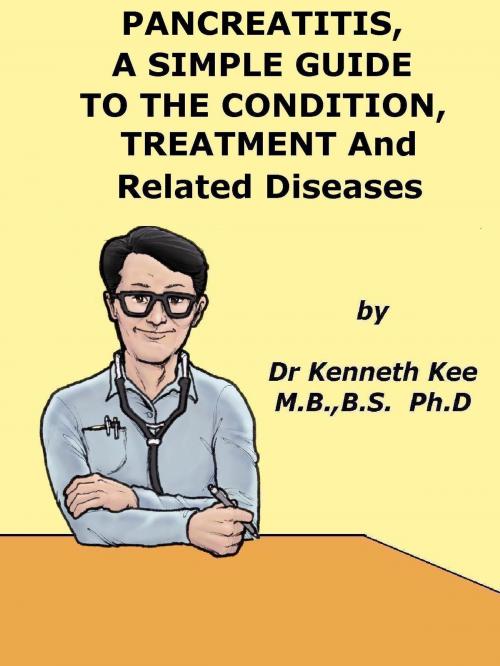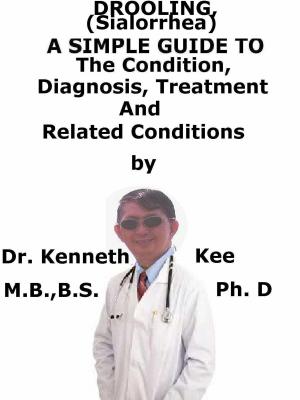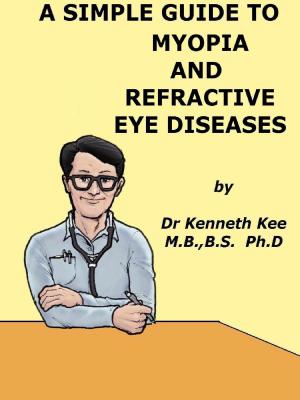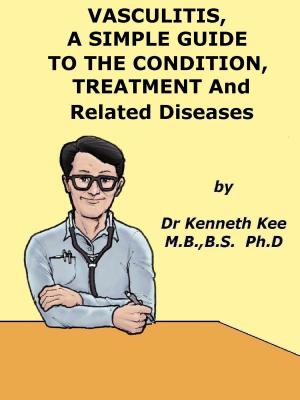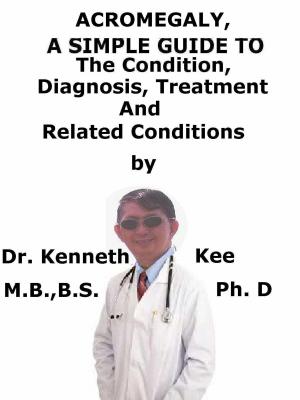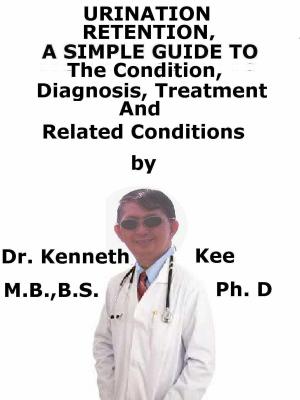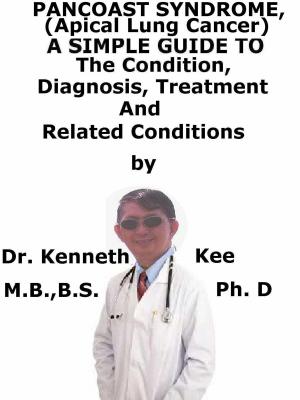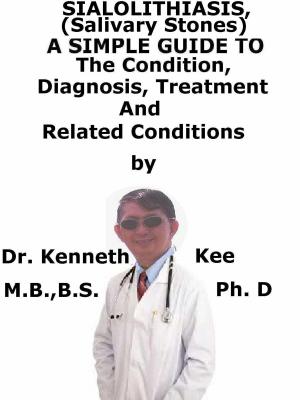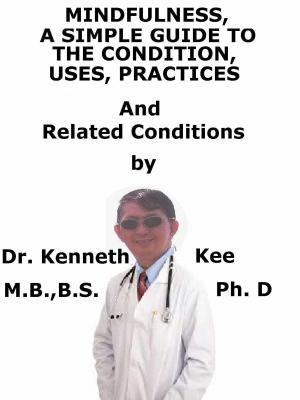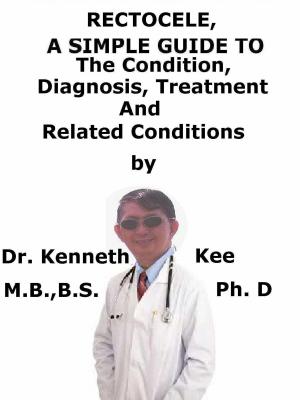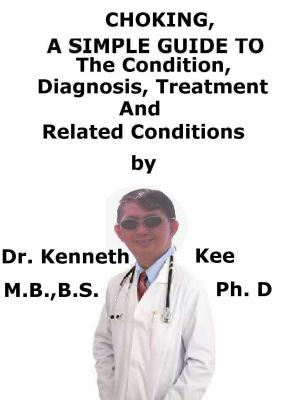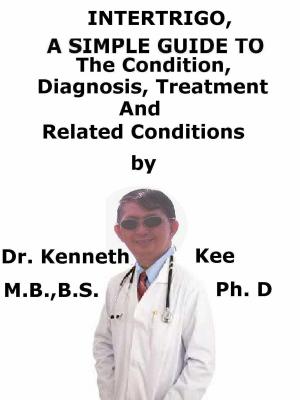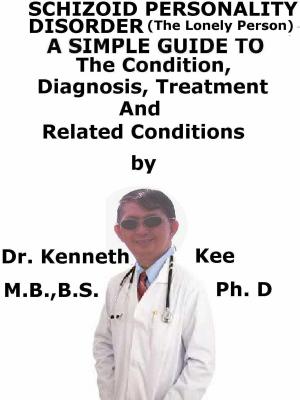Pancreatitis, A Simple Guide To Condition, Treatment And Related Diseases
Nonfiction, Health & Well Being, Medical, Specialties, Internal Medicine, Gastroenterology, Health, Ailments & Diseases, Abdominal| Author: | Kenneth Kee | ISBN: | 9781310566271 |
| Publisher: | Kenneth Kee | Publication: | December 10, 2014 |
| Imprint: | Smashwords Edition | Language: | English |
| Author: | Kenneth Kee |
| ISBN: | 9781310566271 |
| Publisher: | Kenneth Kee |
| Publication: | December 10, 2014 |
| Imprint: | Smashwords Edition |
| Language: | English |
Pancreatitis is an acute or chronic pancreas inflammation
Chronic disease follows attacks of acute pancreas infection
The presence of gallstone is the most common cause of pancreatitis
Small gallstone blocked the bile duct causing pancreatic necrosis
Patients present with epigastric abdominal pain aggravated by eating
There may be also abdominal distension, nausea and vomiting
There may be mild fever, shock and hypotension
There may also abdominal tenderness and distension
Diagnosis is by high blood levels of lipase and amylase
An ultrasound scan may be done to look for pseudocyst in pancreas
Complications are damage to the pancreas or kidney function
There are also shortness of breath and poor food absorption
Treatment is immediate hospital treatment and admission
Pain management, nutritional support and IV hydration
Analgesic or antispasmodic medicine usually by injection
Most pancreatitis patients have complete resolution
-An original poem by Kenneth Kee
Interesting Tips about the Pancreatitis
A Healthy Lifestyle
1. Take a well Balanced Diet
2. Treatment of Acute Pancreatitis:
a. Admission to hospital
b. Gastric suction and fluid replacement
c. Analgesic or antispasmodic medicine usually by injection
d. Antibiotics for infections
e. Treat biliary tract diseases and alcoholism
f. Surgical drainage of pseudocysts after acute episode.
Chronic Pancreatitis:
a. Pancreatic extracts and enzymes together with meals
b. Sodium bicarbonate and cimetidine to prevent enzymes breakdown
c. Analgesic or antispasmodic medicine usually by injection
d. Surgical procedures usually unsuccessful
3. Keep bones and body strong
Bone marrow produces our blood
Eat foods rich in calcium like yogurt, cheese, milk, and dark green vegetables.
Eat foods rich in Vitamin D, like eggs, fatty fish, cereal, and fortified milk.
Eat food rich in Vitamins B and C such as green vegetables and fruits
Zinc and other minerals are important to the body
4. Get enough rest and Sleep
Avoid stress and tension
5. Exercise and stay active.
It is best to do weight-bearing exercise such as walking, jogging, stair climbing, dancing, or lifting weights for 2½ hours a week.
One way to do this is to be active 30 minutes a day at least 5 days a week.
Begin slowly especially if a person has not been active.
6. Do not drink more than 2 alcohol drinks a day for a man or 1 alcohol drink a day for a woman.
Alcohol use also increases the chance of falling and breaking a bone.
Alcohol can affect the neurons and brain cells.
7. Stop or do not begin smoking.
It also interferes with blood supply and healing.
Chapter 1
Pancreatitis
Pancreatitis is an acute or chronic inflammation of the pancreas.
Pancreatitis is usually caused by the following:
1. Alcoholism and diseases of the biliary tract
2. Bacterial infections from salmonella typhi and streptococcus
3. Viral infection especially mumps, coxsackie virus, cytomegalovirus
4. Trauma
Chronic disease follows attacks of acute infection.
What are the symptoms of Pancreatitis?
Person who has Acute Pancreatitis has the following symptoms:
1. Acute onset of abdominal pain starting from the epigastrium, radiating to the back in 50% of cases.
2. Pain usually very severe occurring after a large meal or drinking bout
3. Pain is worse lying supine therefore patients sit or lean forward
4. Mild fever and body aches
5. Nausea and vomiting
6. Hypotension followed by clinical shock
TABLE OF CONTENT
Introduction
Chapter 1 Pancreatitis
Chapter 2 Digestion Process
Chapter 3 More Facts of Pancreatitis
Chapter 4 Treatment of Pancreatitis
Chapter 5 Malabsorption Syndrome
Chapter 6 Alcoholism
Chapter 7 Liver Cirrhosis
Chapter 8 Malnutrition
Chapter 9 Diabetes Mellitus
Pancreatitis is an acute or chronic pancreas inflammation
Chronic disease follows attacks of acute pancreas infection
The presence of gallstone is the most common cause of pancreatitis
Small gallstone blocked the bile duct causing pancreatic necrosis
Patients present with epigastric abdominal pain aggravated by eating
There may be also abdominal distension, nausea and vomiting
There may be mild fever, shock and hypotension
There may also abdominal tenderness and distension
Diagnosis is by high blood levels of lipase and amylase
An ultrasound scan may be done to look for pseudocyst in pancreas
Complications are damage to the pancreas or kidney function
There are also shortness of breath and poor food absorption
Treatment is immediate hospital treatment and admission
Pain management, nutritional support and IV hydration
Analgesic or antispasmodic medicine usually by injection
Most pancreatitis patients have complete resolution
-An original poem by Kenneth Kee
Interesting Tips about the Pancreatitis
A Healthy Lifestyle
1. Take a well Balanced Diet
2. Treatment of Acute Pancreatitis:
a. Admission to hospital
b. Gastric suction and fluid replacement
c. Analgesic or antispasmodic medicine usually by injection
d. Antibiotics for infections
e. Treat biliary tract diseases and alcoholism
f. Surgical drainage of pseudocysts after acute episode.
Chronic Pancreatitis:
a. Pancreatic extracts and enzymes together with meals
b. Sodium bicarbonate and cimetidine to prevent enzymes breakdown
c. Analgesic or antispasmodic medicine usually by injection
d. Surgical procedures usually unsuccessful
3. Keep bones and body strong
Bone marrow produces our blood
Eat foods rich in calcium like yogurt, cheese, milk, and dark green vegetables.
Eat foods rich in Vitamin D, like eggs, fatty fish, cereal, and fortified milk.
Eat food rich in Vitamins B and C such as green vegetables and fruits
Zinc and other minerals are important to the body
4. Get enough rest and Sleep
Avoid stress and tension
5. Exercise and stay active.
It is best to do weight-bearing exercise such as walking, jogging, stair climbing, dancing, or lifting weights for 2½ hours a week.
One way to do this is to be active 30 minutes a day at least 5 days a week.
Begin slowly especially if a person has not been active.
6. Do not drink more than 2 alcohol drinks a day for a man or 1 alcohol drink a day for a woman.
Alcohol use also increases the chance of falling and breaking a bone.
Alcohol can affect the neurons and brain cells.
7. Stop or do not begin smoking.
It also interferes with blood supply and healing.
Chapter 1
Pancreatitis
Pancreatitis is an acute or chronic inflammation of the pancreas.
Pancreatitis is usually caused by the following:
1. Alcoholism and diseases of the biliary tract
2. Bacterial infections from salmonella typhi and streptococcus
3. Viral infection especially mumps, coxsackie virus, cytomegalovirus
4. Trauma
Chronic disease follows attacks of acute infection.
What are the symptoms of Pancreatitis?
Person who has Acute Pancreatitis has the following symptoms:
1. Acute onset of abdominal pain starting from the epigastrium, radiating to the back in 50% of cases.
2. Pain usually very severe occurring after a large meal or drinking bout
3. Pain is worse lying supine therefore patients sit or lean forward
4. Mild fever and body aches
5. Nausea and vomiting
6. Hypotension followed by clinical shock
TABLE OF CONTENT
Introduction
Chapter 1 Pancreatitis
Chapter 2 Digestion Process
Chapter 3 More Facts of Pancreatitis
Chapter 4 Treatment of Pancreatitis
Chapter 5 Malabsorption Syndrome
Chapter 6 Alcoholism
Chapter 7 Liver Cirrhosis
Chapter 8 Malnutrition
Chapter 9 Diabetes Mellitus
